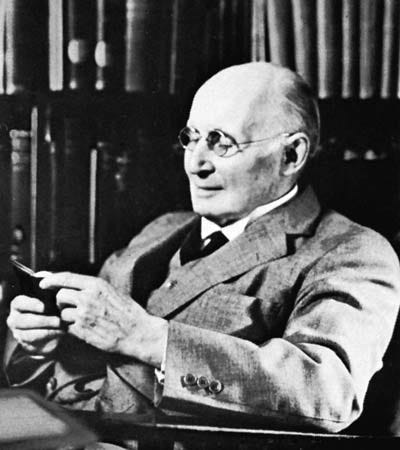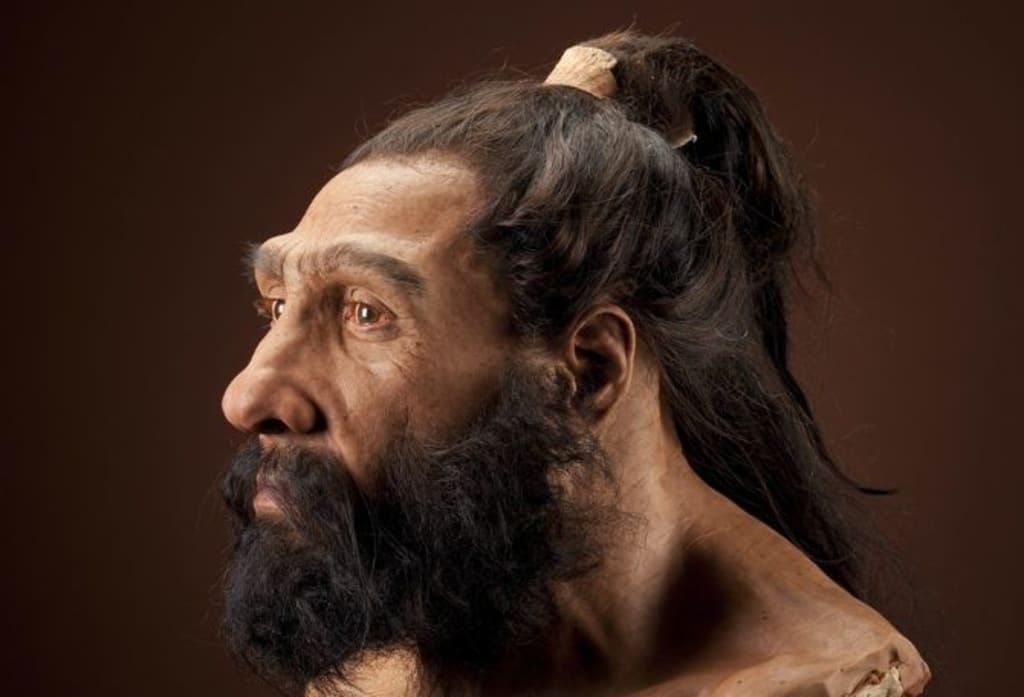Lobaczewski Was Right: Stalin Had No Forehead
What Stalin's profile might say about his personality
I always thought Lobaczewski was imagining things when he wrote this:
Some photographs reveal the typical deformation of [Stalin’s] forehead which appears in people who suffered very early damage to the [prefrontal cortex].
This was in support of his characterization of Stalin as a typical example of “frontal characteropathy.” Basically, dysfunction in or damage to the prefrontal cortex, especially during childbirth or infancy, can result in personality deformations, including impulsivity, diminished ability to visualize and deliberate, a tendency to think using mental shortcuts, and pathological egotism.
As I said, I always thought the reference to Stalin’s forehead was a bit of fanciful phrenology.
Then I saw this picture:
As someone commented on X:
Indeed. Stalin had a “onehead.”
Lo and behold, this is actually a thing.
Correlation between Impulsiveness, Cortical Thickness and Slant of The Forehead in Healthy Adults
Impulsiveness is a multidimensional psychological construct with high clinical interest because it is a risk factor for several psychiatric disorders. This study was designed to investigate structural correlates of self-reported impulsiveness … As a secondary objective, and based on preliminary findings concerning the positive relationship between impulsiveness and the slant of the forehead degrees (SFD), we explore this relationship and the correlation between SFD and cortical thickness (CT) of the entire cortex. … Positive correlations between 14 impulsiveness scores and SFD were also found. In conclusion, CT in prefrontal and temporal areas influences self-reported impulsiveness in healthy adults. Furthermore, SFD could influence the CT of regions involved in impulsiveness. Finally, we suggest that a higher SFD [is associated with] higher self-reported impulsiveness in healthy adults.
The article includes this image, showing a man with a slanted forehead angle of 24 degrees.
The mean SFD in this study was around 17.73 degrees, with a standard deviation of 5.49. Among the 48 subjects measured, the minimum angle was 10 and the highest was 34. I used GIMP’s measure function to determine Stalin’s SFD. It’s a whopping 32 degrees. (In this photograph of an older Stalin, it is around 28 degrees, so let’s be generous and average it out to 30, which still puts him over two standard deviations from the mean.)
Now let’s compare with some formidable foreheads. First, while not a full profile, admire this specimen: Alfred North Whitehead, one of my favorite philosophers, who put his prefrontal cortex to good use:
Another great head—this time, that of G.I. Gurdjieff, sporting an admirable 13 or so degrees and a near vertical lower forehead:
These are absolute peak domes.
Males typically have an SFD between 15 to 20 degrees, due in part to their more pronounced brow ridge. Here’s a forehead of Lynchian proportions, at around 17 degrees. Note the brow ridge projection and slight backward slope up to the hairline:
While the above men were known for their brains and creativity, I wondered if forehead slope might also be a feature of attractiveness—something I’d never really thought of before. It would make sense if it were. And yeah, it pretty obviously is. That’s why there’s a market for forehead augmentation.
Henry Cavill, considered to have an objectively very attractive face for a male, has an SFD of around 17 degrees:
I asked Grok to find a male celebrity with a very (vertically) flat forehead, and it suggested Brad Pitt, who has an SFD of around 13 degrees with a very flat lower forehead (around 3 degrees):
Women, with less pronounced brows, typically have rounder and more vertical foreheads (similar to Pitt’s and Gurdjieff’s), as demonstrated in the flat lower forehead and graceful slope of American model Taylor Hill (with an impressive SFD of around 10):
Brooke Shields, at around 12 degrees, has a more gradual acclivity:
Dutch model Doetzen Kroes’s balanced and feminine contour is somewhere between Hill’s and Shields’s:
SFD is measured from the glabella (the point between the eyebrows) to the trichion (the midpoint of the hairline). When that line is drawn on the women above, a significant portion of their foreheads fall outside the line, given their more rounded form. Grok estimates Hill’s actual slope (from brow to the point at which the forehead gradually slopes back to the hairline) to be 0-5°, Shields’s 3-8°, and Kroes’s 2-6°. (While a man’s slope is typically 15-20°, a woman’s is 0-5°.)
Contrast the above examples with this one from a cosmetic surgery site showing before and after forehead augmentation:
This man had an extreme SFD of 45 degrees. “Literally worse than Stalin.”
Finally, for your consideration, and just because I was curious. Here’s what Neanderthals looked like in the flesh, based on the Shanidar 1 skull:
Grok tells me the average SFD of Neanderthals was 30 to 40 degrees.
Positively Stalin-esque.


















I think I read about a criminologist who studied the brains of about 60 psychopaths and found that there was some damage to the frontal cortex with various causes amoung most of them. He was seeking an anatomical cue for psychopathy. What was fascinating about his story was that at one point he was lecturing and was attacked at night in his sleep by an intruder in a hotel suite (in Istanbul, I think it was. He said that he always counseled his students, in such a scenario, to just give up to the robber—but when he was actually in that situation, he found himself fighting, and, getting the worst of it. During the battle his assailant broke off a knife blade in the lecturers throat. The professor survived the attack but his vocal cords were cut and it took about a year to recover his ability to speak. Now he confesses that, on the issue of capital punishment, as a good liberal academic he wants to oppose it, but as a crime victim something in the body feels like this is a mistake and doesn’t agree.
I believe that Fetal Alcohol Syndrome also leads to this.